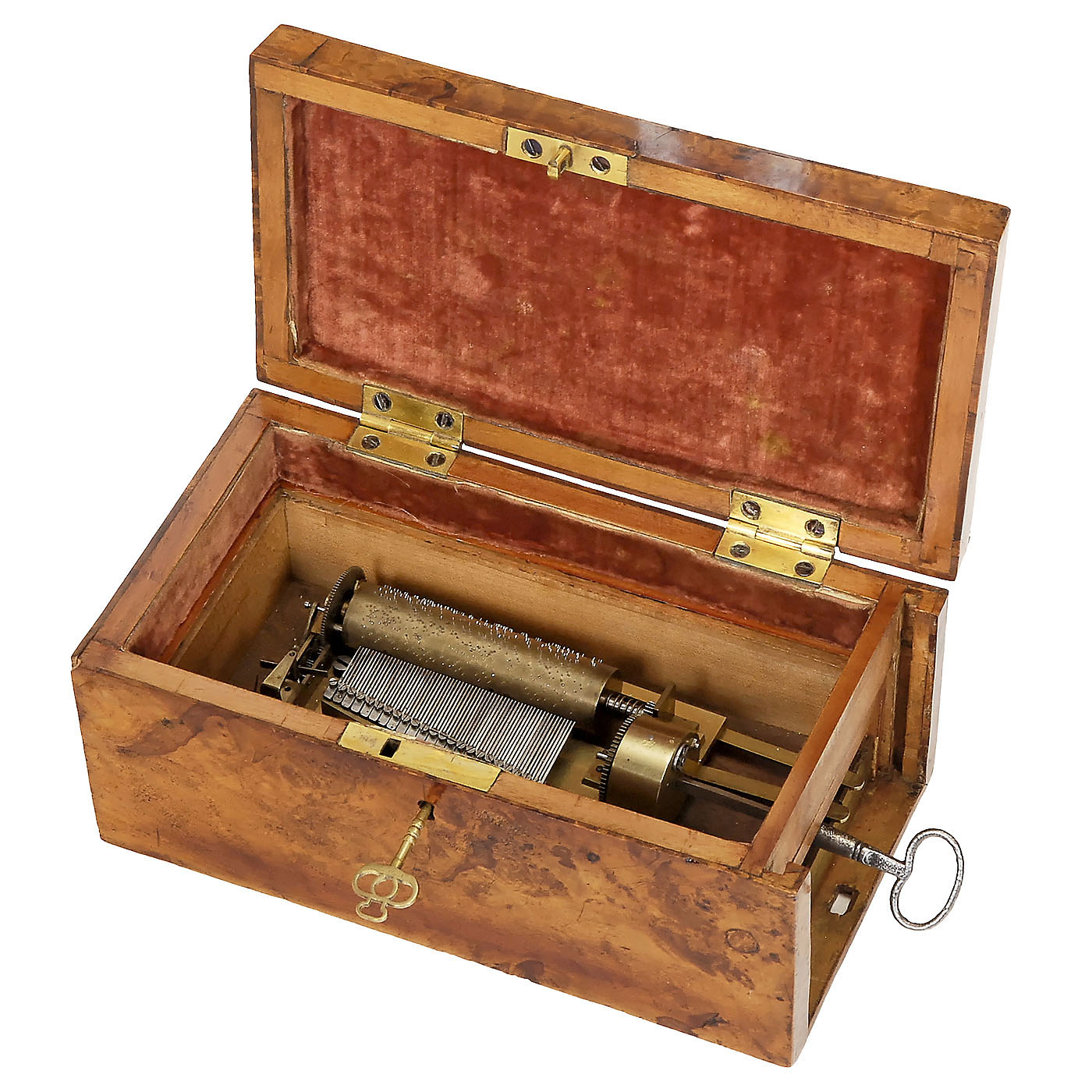
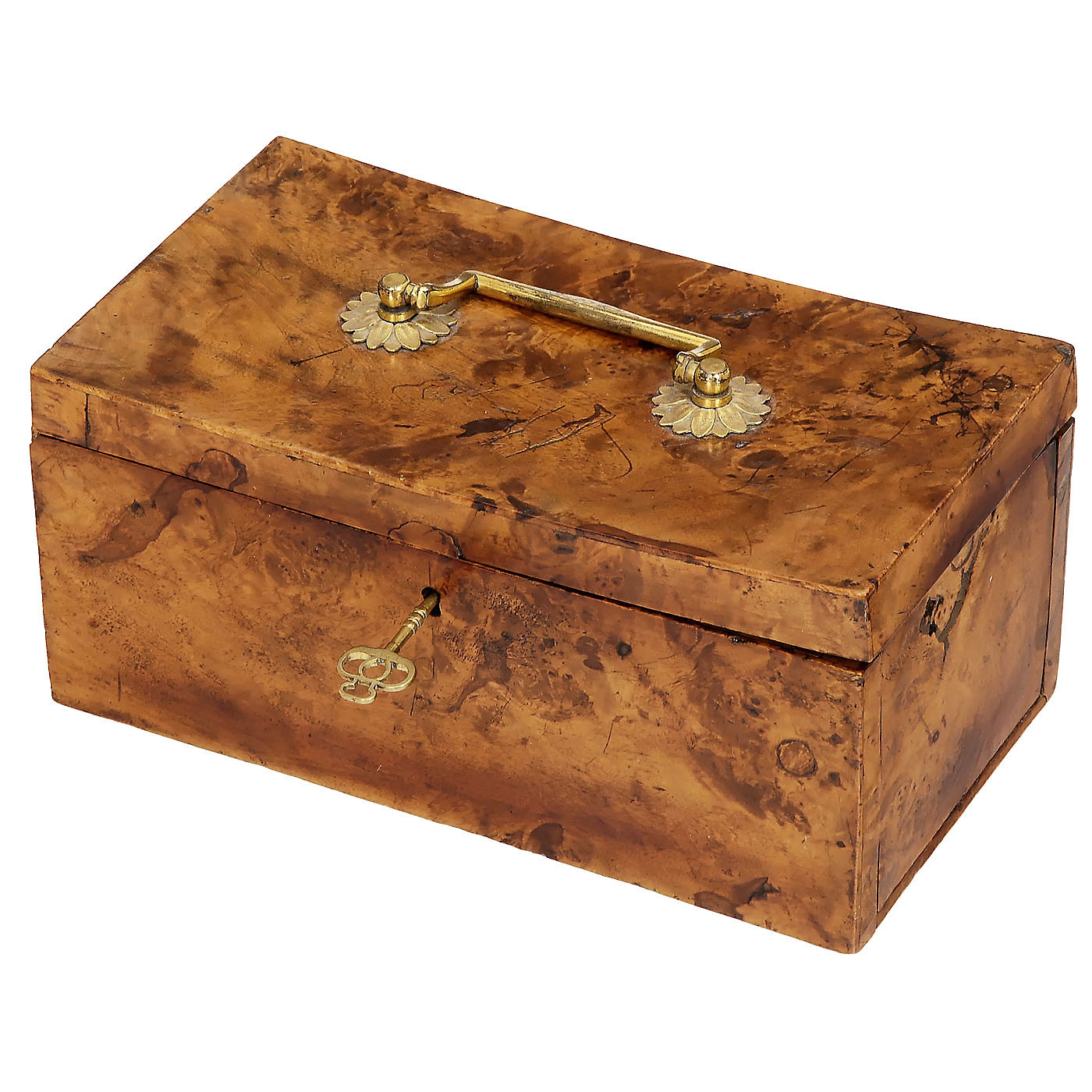
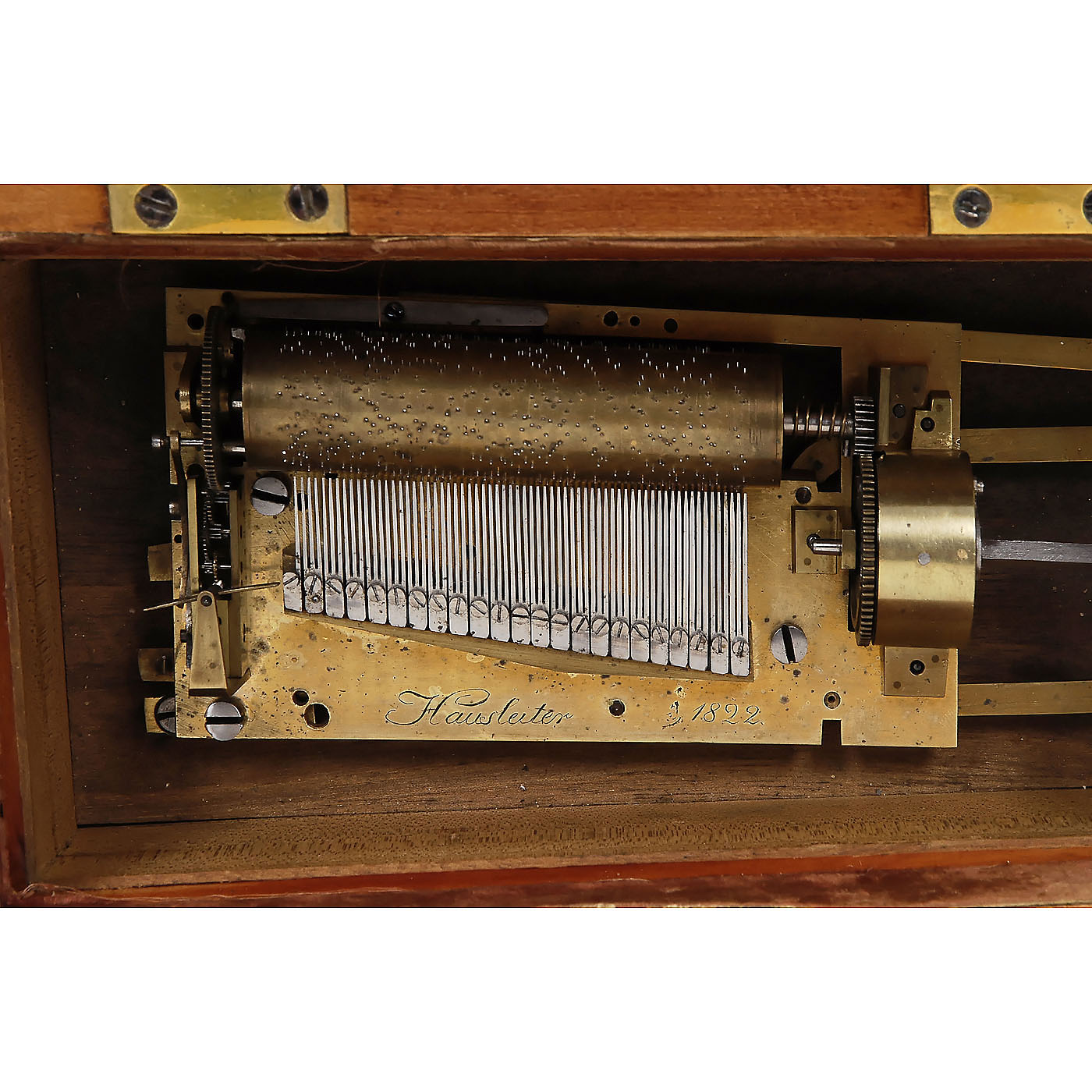
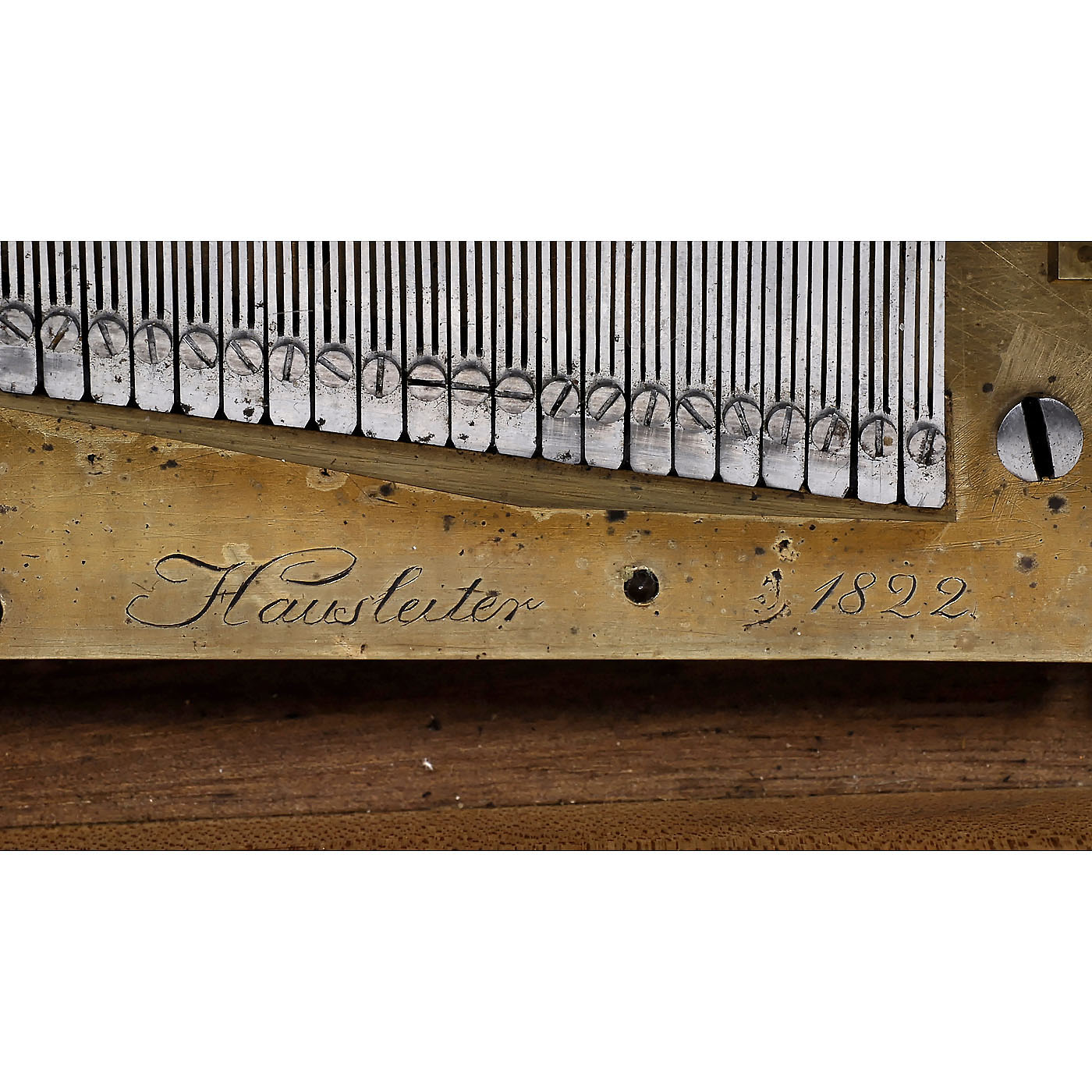
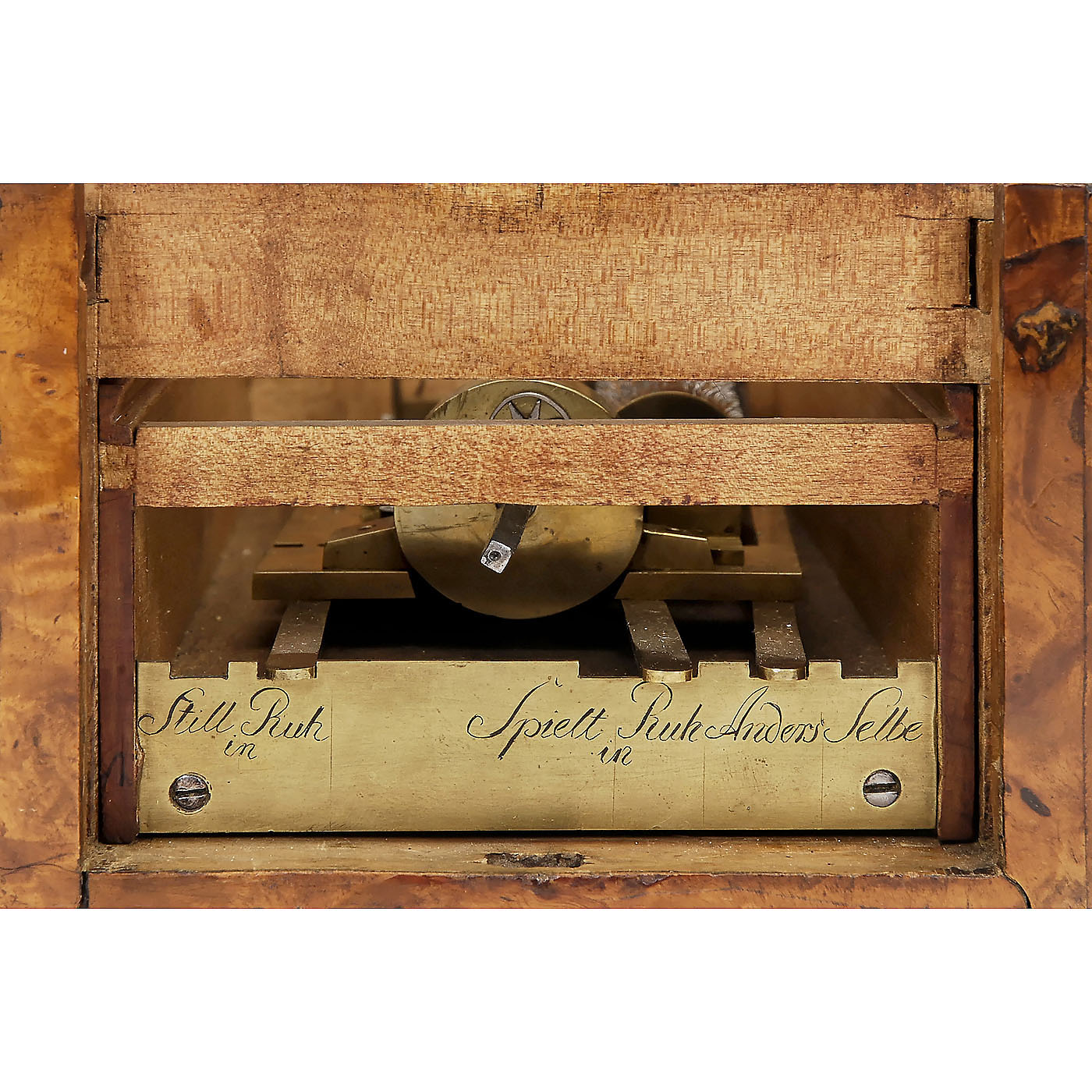
Signed on bedplate "Hausleiter, 1822" and "F. Hausleiter, Ansbach" on the underside, playing 2 airs, with sectional comb in 22 groups of 3 and 1 single-toothed treble section (2 treble teeth removed during production?), brass bedplate, vertical open-spring motor with large ratchet assembly and long winding arbor, four-wheeled governor train, change/repeat, stop and instant-stop controls engraved "Still/in Ruh", "Spielt/in Ruh" and "Anders/Selbe", in root-wood-veneered case with gilt-brass handle engraved "Jul. v. Welz" and dated "1822", wd. 8 ¼ x 4 ½ in. (21 x 11 cm), cylinder 3 1/8 in. (8 cm), good playing condition with fine, bright arrangements. With winding and cabinet keys, the latter engraved "Jul" and "v. Welz". - References: Auction at Dorotheum, Vienna, 26. April 2017, Lot 559, for a musical secretaire by Hausleiter dated 1826; Luuk Goldhoorn, "Ein frühes Kammspielwerk aus deutscher Produktion", in: "Das Mechanische Musikinstrument" (Gesellschaft für Selbstspielende Musikinstrumente e.V.), 39th Year, Vol. 95 (April 2006). - In this intriguing musical box of early German production by Georg Friedrich Christoph Hausleiter (1791-1848), even the case has a puzzle box quality, with the mechanism concealed beneath a 'false bottom' and accessed via a removable side section. The movement itself is housed in a sliding inner box that fits snugly inside the mahogany-veneered case. - Goldhoorn suggests that Hausleiter based the technical aspects of his design on an early Austrian movement, possibly by Willenbacher & Rzebitschek who began manufacture in 1819, but purchased the comb in Switzerland. Unusual features - typical of neither Austrian nor Swiss movements - include the vertical open-spring motor and the large ratchet wheel. In size and date, this piece arguably falls into the category of a 'cartière' - a rare transitional mechanism with the proportions of a cartel but the size and form of a tabatière. - An important document in the development of the mechanical music industry in Germany.

